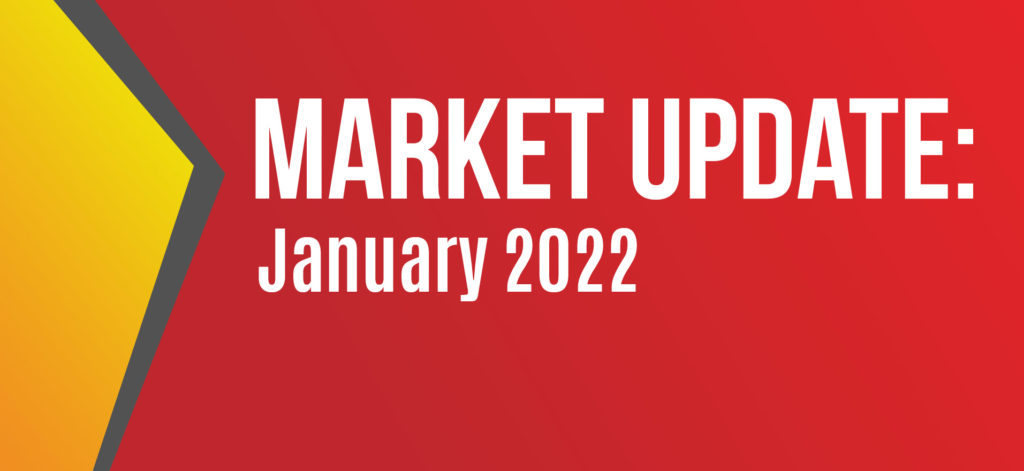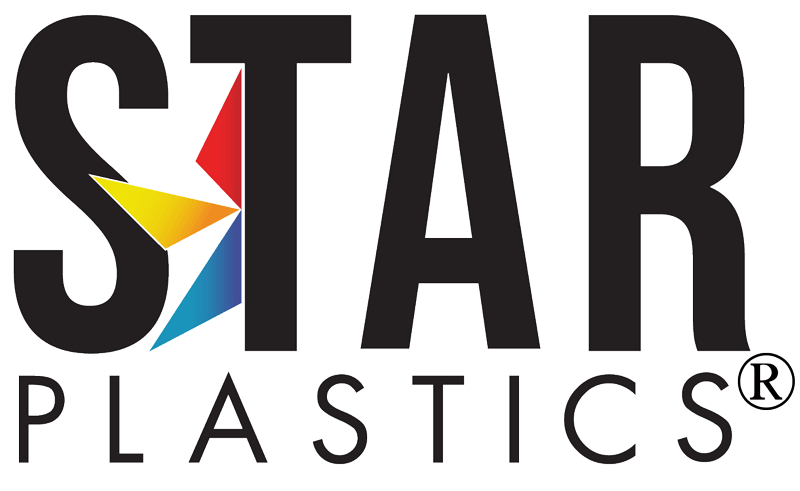News
January’s Plastics Market Update

As 2022 begins, additive shortages is the new lead of the story. Flame Retardant additives and pigments will be one of the driving factors in increased prices during the first half of 2022, while the pricing of General-Purpose versions of PC, PCABS, and ABS in NA and Asia, while elevated, seem to be flattening. Freight prices are also flattening (but still quite elevated), and driver-shortages and Covid-related concerns are still an issue for national and global logistics.
Additives
The additives market is moving as expected. We are seeing increases of 30% for UV and glass moving up by 40% as well – potentially prompting price increases in the near future.
The recent flood that hit Malaysia damaged an NEG fiberglass production plant, which exports 60% of their production to North America. This is just one more in a series of glass issues. FR additives will also be a big driver in overall pricing and lead times moving into 2022 – this will be the year of fighting for additive supply.
FR
FR additives will be the lynch pin in supply for all things PC, ABS and PCABS FR looking forward. Four FR suppliers are currently on FM, pointing to China’s dual control of energy as a significant contributor of supply reduction. FR price increases of 150% have been seen in Asia during Q4/21. Ongoing strong demand and longer than normal lead times, plus the current supply shortages of both additives and polymers, make it difficult to predict the pricing and lead time of FR finished good compounds. Based on this, the price reductions we thought we’d experience in 2022 may not be a reality until the latter half of this year.
A direct example we’ve seen due to these FR issues is extension of lead times– LG Chemical increased their lead time for imported FR ABS to 6 months.
Phosphorous will be the main player in the FR story in the near term – as both Clariant and DuPont declared FM citing lower production in Asia coming from dual controls of energy. This will affect all FR polymers such as ABS, PC, PCABS and other resins.
All this while the General Purpose (GP) versions of PC, ABS and PCABS are elevated but flat in pricing due to shortness of supply in North America, with Asia prices dropping.
PC
In North America, high demand and tight supply continues to be the way of life. With PC inventories still short, the backlog will continue to exist through Q2-22. However, while prices remain high, they are flattening and look to remain stable through Q3-22 with no additional increases expected. Q3-22 is when we hope to see more of a ‘normal’ market in regard to supply/demand volumes.
Operating rates will hold at their ‘normal’ in the mid 80% as lead times come down. We expect to see inventory development by the end Q2, with lead times coming down shortly after for ‘normal’ market conditions.
PC costs in Europe continue to go up due to energy costs–in the last year, natural gas has increased to 5x it’s normal rate. In China, prices continue to drop with the increased supply of BPA, with a chance that some smaller PC plants would be idled when the existing volume is too large. Sabic’s china PC plant successfully started up late December, which is the first of several expected to come online. Exports will continue to decrease as Asia becomes self-sufficient in supply, and global capacity will increase 14% year-to-year due to increases in production in Asia and Europe.
ABS
In Q1, we’ll start to see operating rates recovering to maximum output, lead time reductions by Q2-22, and inventory replenishment and balanced supply by Q3-22.
Unchanged prices were at the center of the market in December, with low-range prices up 10 cpp, and specialty grades, FRs and colors up more than 20 cpp. Cash costs though, have come down in December by 6 cpp to 93 and that is expected to hold through Q1/22. Pricing will continue to be firm, and those reductions will not be seen by the consumer. FR versions of ABS will be higher in 2022 with the abovementioned FR shortages.
This is very similar to PC – ABS is starting to come back, but it will take replenished inventories for lead times to come back down to 4-6 weeks (which we expect to occur mid-year) from the current 18+ weeks. Costs are flat into 2022 as feedstocks are more stable in supply.
Again, China will increase ABS capacity by 43% in 2022 and become more self-sufficient and this will slow imports to NA.
There will be some production capacity growth as LG is building a new ABS compounding plant and technology center in Ohio.
Nylon
Cash costs for Nylon 6 is down 3cpp from last month and is expected to continue to drop in Q1 in conjunction with falling benzine prices. Nylon 66 is down 6 cpp since November, with more reductions expected next month by 4 cpp.
Shortages of glass and FR additives, again, will affect the compounded market segment this year.
Supply overall will be short of demand in NA, and by mid-2022 will look more like the markets for ABS, PC and other polymers.
PBT
Prices of PBT continue to be flat at $1.55 in NA, as Asia continues to supply the compounded market. Any retail price increases here have been influenced by transportation costs –larger volume buyers are moving more towards imported PBT as price can be up to 15% lower. Looking forward, Q1/22 prices are high but stable and supply is improving, but once again, FR and glass will be the shortage in the industry just like all the other engineering resins.
Freight
Freight costs for imports are down to $15,000 from the mid $20’s during the surge to get products to the shelves for the year end consumer purchases. This backlog of imports will take through the first half of the year to alleviate at a minimum.
Canada has also recently established a vaccine mandate for truck drivers crossing into Canada from the United States. As of 1/15/22, Canadian truckers must be fully vaccinated if they want to avoid quarantine and pre-arrival test, while unvaccinated American truckers are to be turned back at the border. There are fears that application of the mandate could potentially cause some slowdowns at the border or worsen supply chain issues, However, in the first few days of the mandate, the borders appeared to be flowing smoothly. Whether this causes slowdowns or protects from the wider-effects of driver-shortages due to illness will be seen in the coming weeks and months.
Sustainability
There were multiple developments, investments and acquisitions made in the past few months in the name of sustainability.
Sabic is investing in Malaysia and Saudi Arabia, Ineos is investing in Europe, and Trinseo acquired a collector and recycler company in Europe, which mechanically and chemically converts recycled content. Sibur is building a recycling facility in Russia to be finished by 2022, and Shell broke ground on a chemical-based recycling facility in Singapore.
LEGO Group is also investing $1 billion for a new factory in Vietnam, Ascend is buying a compounding facility in Mexico, and Lanxess is building a second compounding line in their China facility. Covestro also began marketing Makrolon RE grades that are climate neutral, made from recycled-content mass-balance and renewable electricity. This brand comes from their Uerdingen, Germany site, and achieved their deadline of developing this product by the end of 2021. Sabic started production at the Tianjin sited on December 1st.
Notice that all the investments in recycling are outside the United States.
Please contact us at Sales@StarPlastics.com or contact your local Star Plastics representative if you have any questions about current market conditions or how this may affect upcoming orders.



